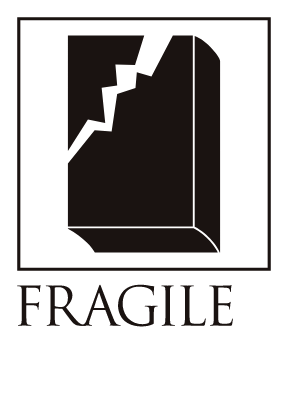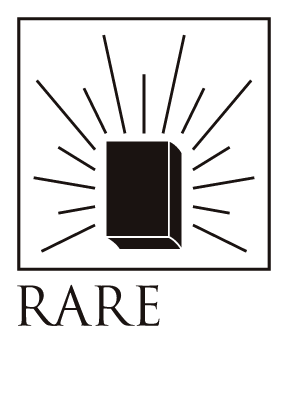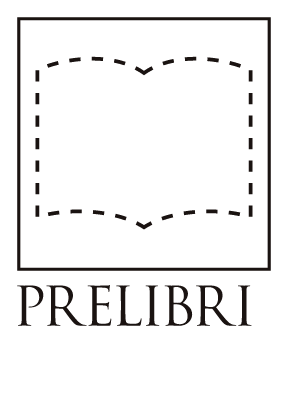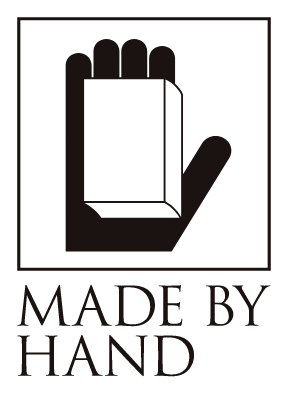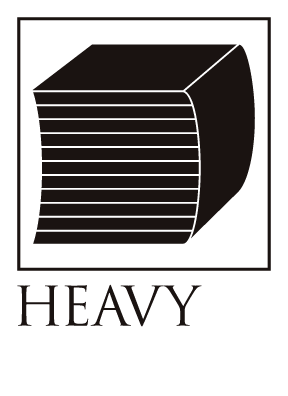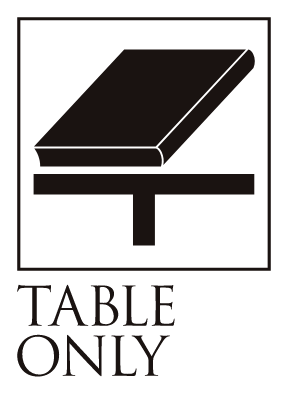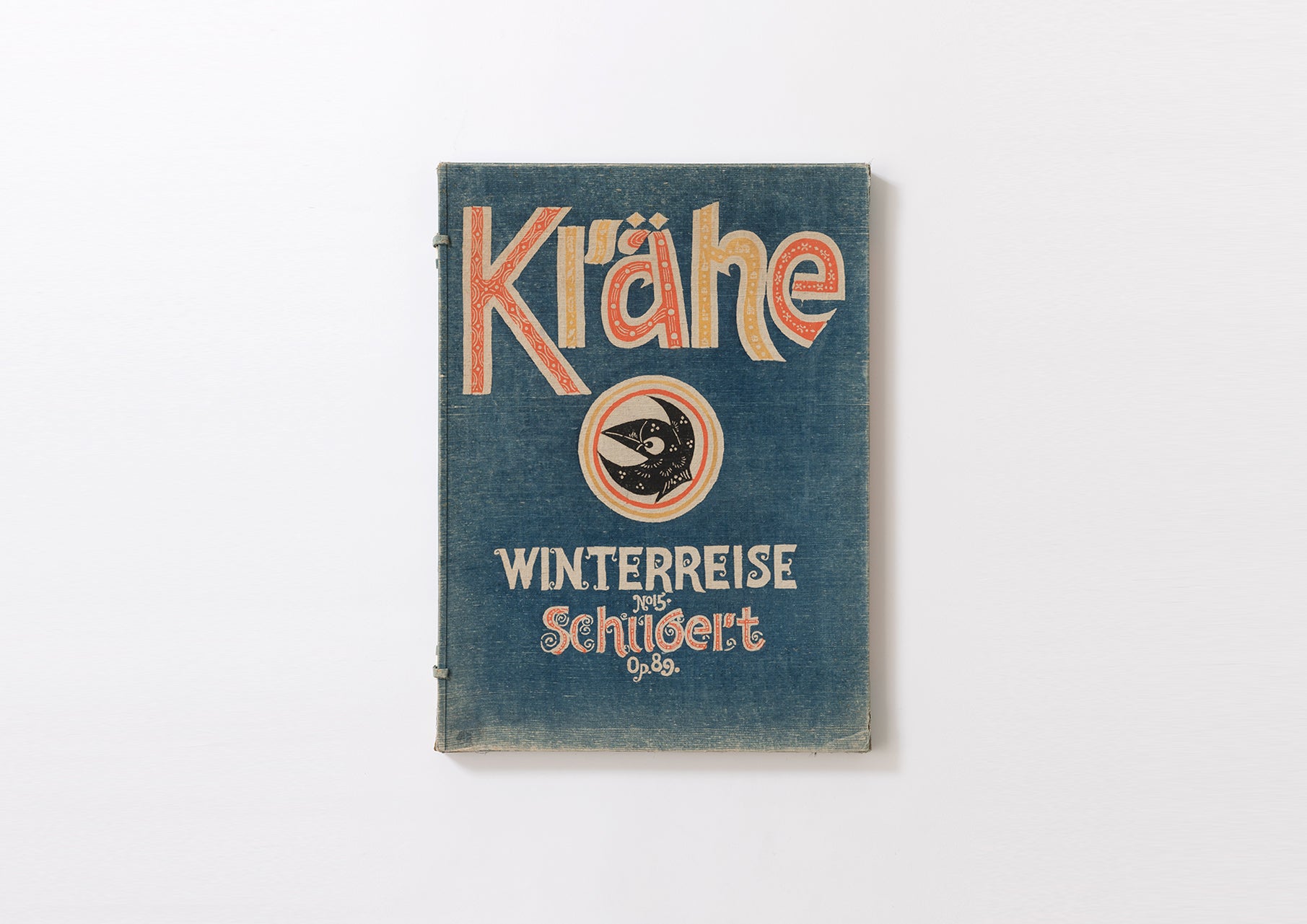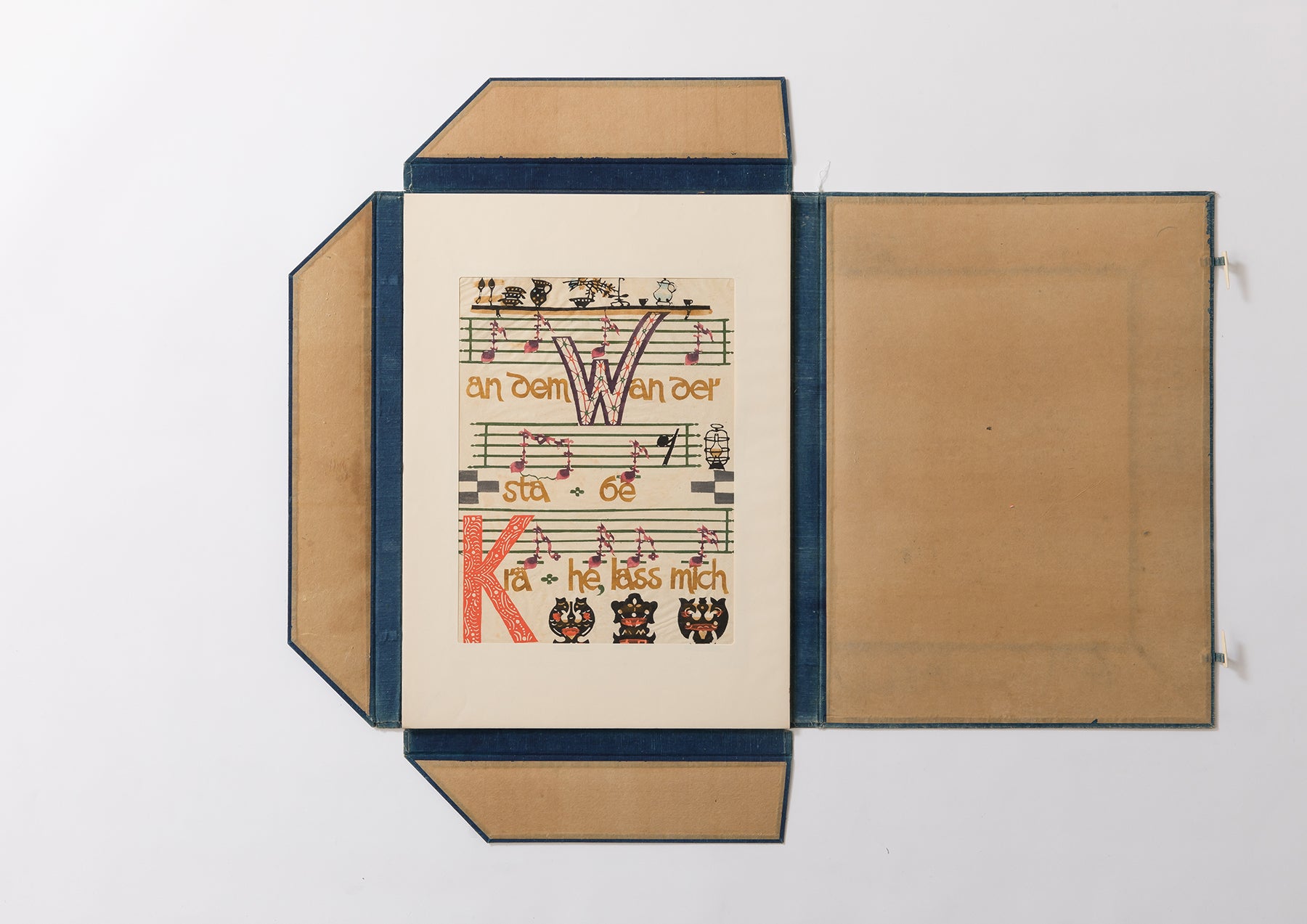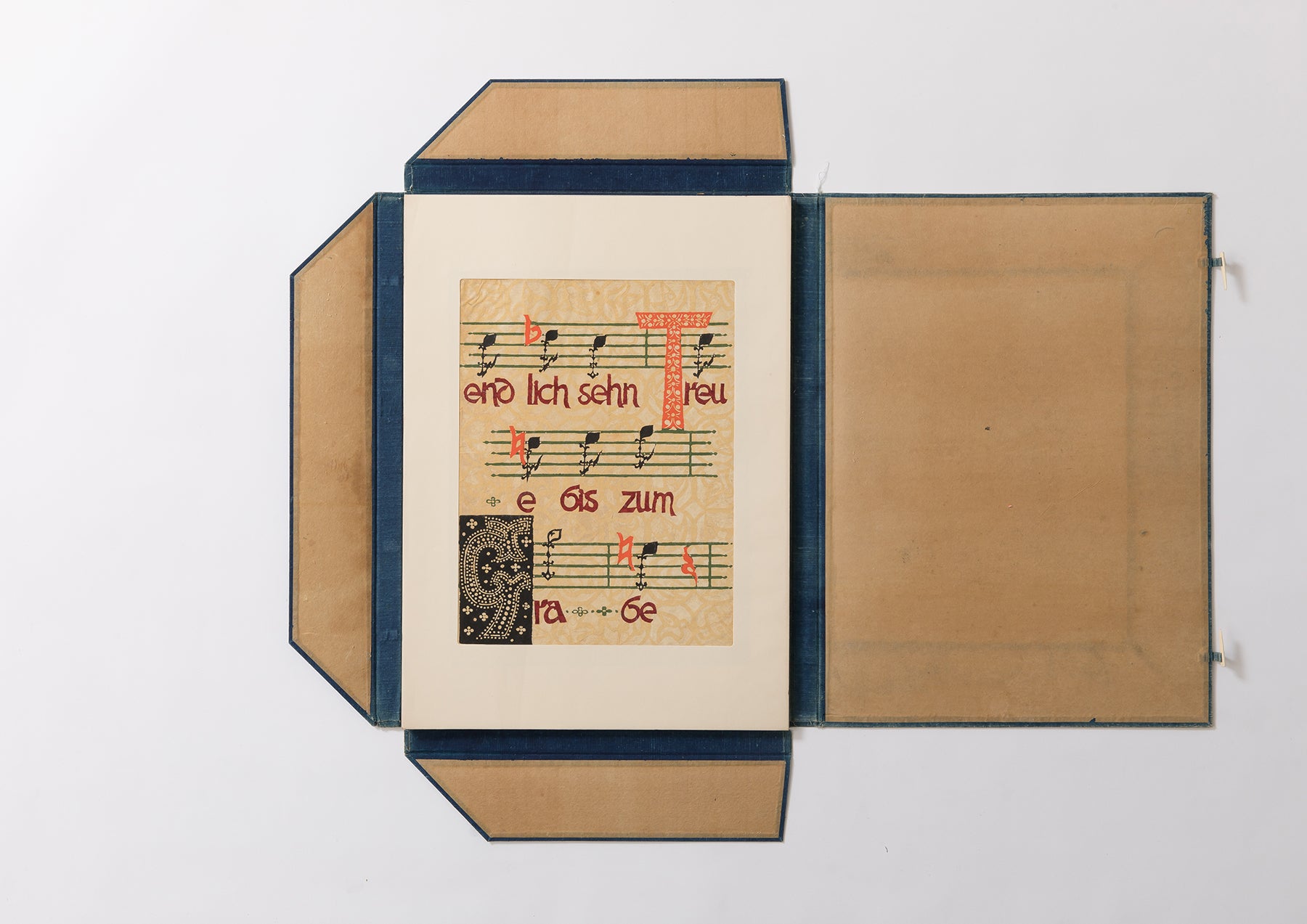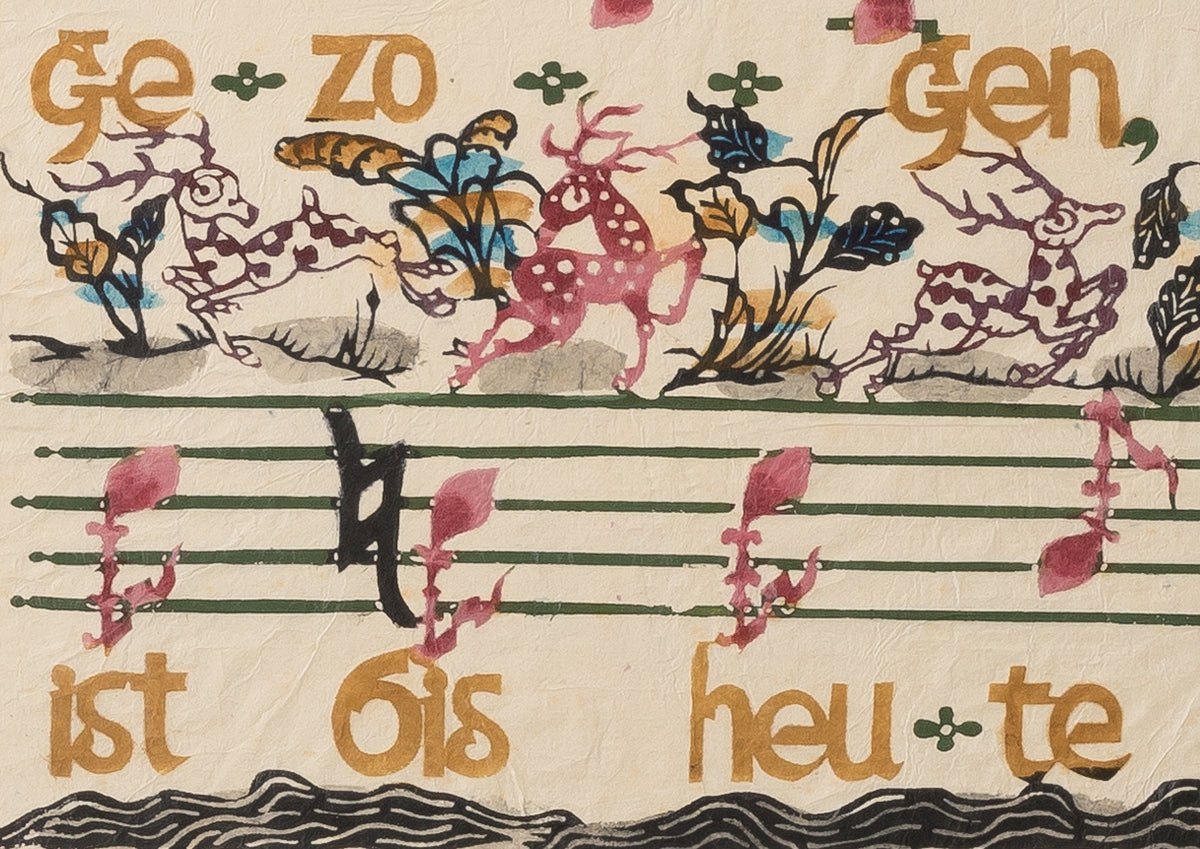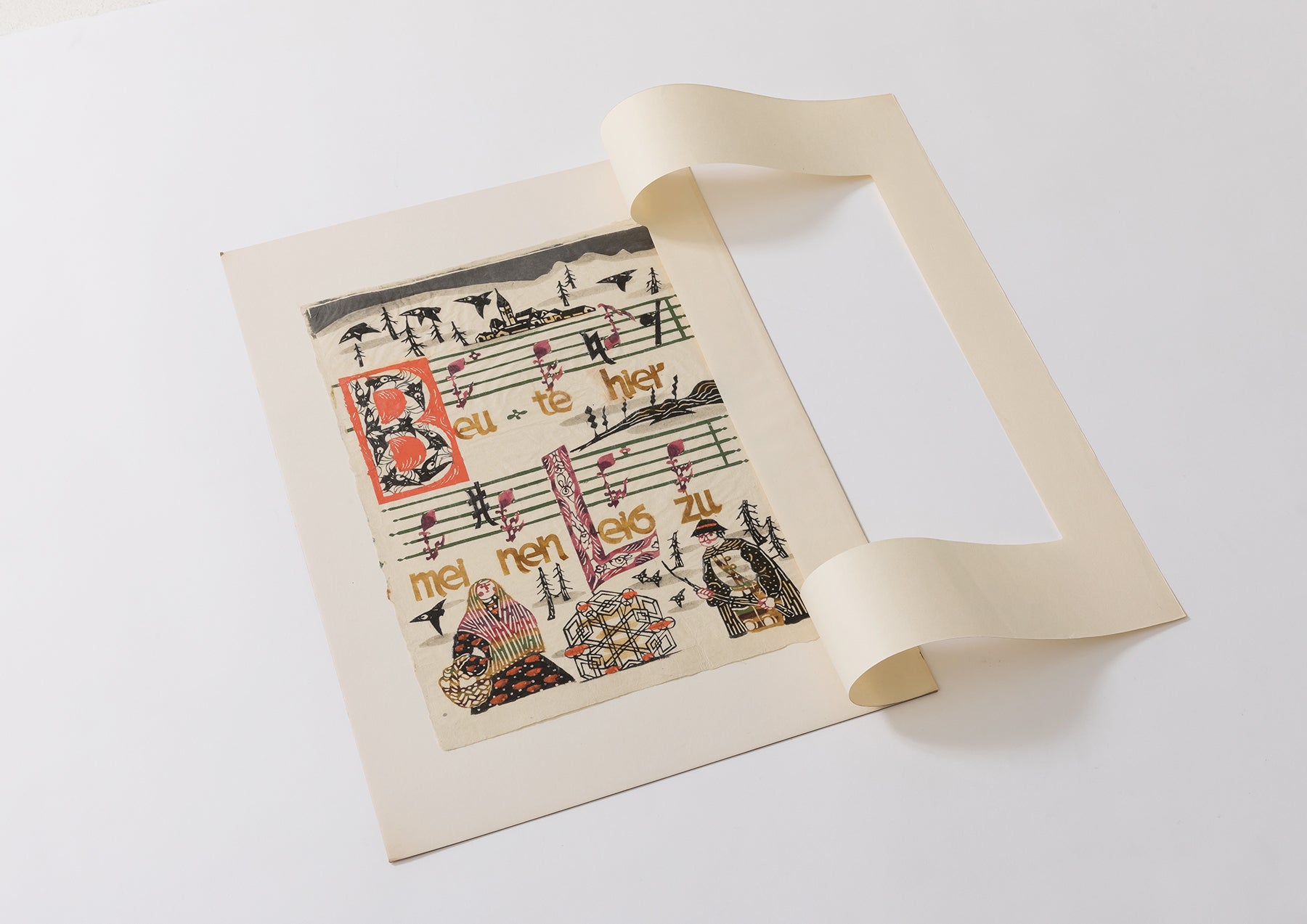Die Krähe Winterreise
Bibliographic Details
- Title
- Krahe Winterreise.NO.15(シューベルト歌曲「冬の旅 カラス」)
- Author
- 小島悳次郎
- Editor
- 森口太郎
- Designer
- Tokujiro Kojima / 小島悳次郎
- Year
- 1957
- Size
- h443mm × w335 mm
- Weight
- 3190g
- Pages
- 12
- Language
- ドイツ語/英語
- Binding
- 布製帙のポートフォリオ
- Printing
- 型染絵
- Edition
- Printed Edition 80
I love Schubert so much
The dyer and weaver who dyed the sheet music,
Tokujiro Kojima.
This book is about the dyeing and weavingTokujiro KojimaI loveThis is a large collection of stencil-dyed artworks based on the score of Schubert's "Die Krähe Winterreise (Winter Journey of the Crows)."
Tokujiro Kojima was born into a family of dyers specializing in Yuzen dyeing in Tokyo. He was born in 1912, the same year as John Cage and Jackson Pollock.When he was about 30 years old, he happened to visit the Japan Folk Crafts Museum and came across Serizawa Keisuke's stencil dyeing paintings, which left a deep impression on him. Soon after, he knocked on Serizawa Keisuke's door and ended up moving next door to the Serizawa family home in Kamata at the time. He lived next door and became Serizawa Keisuke's beloved apprentice, working hard in his studio, while also becoming deeply involved with the Mingei movement.
In this environment, Japanese production areas, Japanese climate, and Japanese folk art motifs are what ferment into my own dyeing style. In Tokujiro's case, it was a little different. His apprentice and disciple, Okamura Kichiemon, painted the Japanese spirit with Japanese techniques,Tokujiro said,I have always been drawn to Gregorian chant scores and miniature medieval prayer books, and have adapted them to my own style.
Tokujiro'sHis master, Serizawa Keisuke, was a Living National Treasure dyer and collector of antiques. He had an interest in folk tools, antiques and old tools from all over the world, collecting rare items from all over Asia to Africa. He would silently and carelessly leave his items on his desk or in a corner of his room, not to show them to others. However, his eye for the items was so great that Masako Shirasu remarked, "The same eye shines over an ordinary tin painting or a spoon as when looking at a Momoyama period folding screen." The shop was packed with items from around the world. Serizawa ResidenceThe strange atmosphere of the place became the nourishment that allowed dyer and weaver Tokujiro Kojima to create his own unique world of dyeing.
Tokujiro isHe also loved music. His passion wasIt was such an essential part of life that people carried large gramophones with them to their evacuation sites during the war.He especially loved Verdi's operas and Schubert's lieds (art songs), which he would always play in his studio like a radio. It was a natural progression from this that he began stencil-dyeing music notes, and at the age of 77, he created this book.is.This is the last major work of his life, and his last collection of stencil prints. Only 80 copies are available. It was wrapped in a case that I had dyed myself.
This book "The Black Winter FestivalThe subject of this piece is Schubert's "Winterreise - No. 15 The Crow".This is a masterpiece composed by Franz Schubert in 1827. Born in Vienna, Schubert died at the young age of 31. During his short life, he rarely traveled.SchubertHowever, he met Wilhelm Müller, a poet of the late Romantic period, and set Muller's poems to music to create the song cycle "Winterreise." Although his friends disapproved of the work, saying "it's too dark for me to like," Schubert himself was the only one who liked it. It is said that he died of either typhoid fever or mercury poisoning as a treatment for syphilis, but the story that he was proofreading the score of "Winterreise" until just before his death shows that he was looking forward to its completion more than anyone else.
The stencil-dyed music score in this book features a crow and a traveller.In the West, crows "Connecting this world with the next" symbol, thatA song about a crow clinging to a traveller and not letting goThis scene truly symbolizes the darkness that Schubert's friends detested. If you look closely at the works of Tokujiro Kojima,The twelve stencil-dyed scores are all richly colorful and evocative of death.There is no sign of any gloomy scenes. Where have the graveyard crows, the ominous crows gone? Rather, they are depicted as "traveling crows" that travel with us.
Here is my hypothesis. I think Tokujiro adapted Schubert's crow to a Japanese crow. Not the modern crows that are shunned as a nuisance, but the "Yatagarasu", a symbol of the sun god." "The Winter Reception"The crow depicted is the legendary "Yatagarasu" crow that guided Kamuyamatoiwarebiko (later Emperor Jimmu) from Kumano to Yamato during the Emperor Jimmu's Eastern Expedition in the Kojiki and Nihon Shoki myths. In this case, the traveler is Kamuyamatoiwarebiko, and the journey must have taken him through the rugged forests from Kumano to Yamato. It would not be surprising if Kojima Tokujiro was secretly plotting such an alteration.I finally realized that ``Traveling Glass'' was the best choice after all.
The genius of Tokujiro Kojima, who drew attention from around the world with his Japanese dyeing technique known as katazome-e, is still not well known. Even in today's Japan, where the Mingei movement is attracting attention again, no one has properly introduced him. Still, what he was trying to achieve was something like a Bunraku puppeteer manipulating a guignol or a Kabuki actor performing Shakespeare.Perhaps it was the poetic spirit of Mingei, which fluctuated between Japan and the world, that ultimately transformed Crow.
Schubert himself passed away early without revealing who the traveler in "Winterreise" was or where he was traveling. Nevertheless, Tokujiro Kojima's stencil-dyed painting of "Winterreise: Crows" is full of hymns to life.
"The Krähe"
Lyricist: Wilhelm Müller
A blacksmith fought with me
At the city centre,
This is for and for
My heart is full of germs.
Krähe, Wunderliches Tier,
Will I get this?
Meinst wohl bald als Beute hier
Do you want to leave my house?
Nun, es wird nicht weit mehr gehen
An dem Wanderstabe.
Krähe, lass mich endlich sehn
Come on!
A crow leaves that town
Followed me
Without ceasing to this day
It was flying above my head
Crow, you weirdo
Are you not going to abandon me?
Maybe soon here
You're going to feed on my body
Well, no matter how much I hold on to my cane
I can't go any further.
Crow, show me one last time
Sincerity that lasts to the grave
Text by Osamu Kushida
